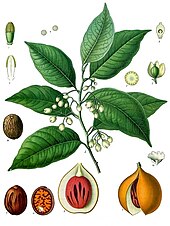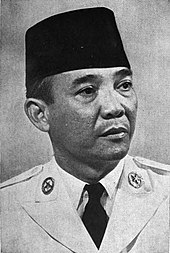Yes, the topic is rather shocking, but it was fascinating to read the evolution of the toilet. This lead to the development of plumbing technologies. The smithsonian has a very interesting article about this – where they have gone into details about the evolution of the “throne room” from medieval times to the present. Toilets were seats actually meant for kings. How very interesting.
- King Minos of Crete had the first flushing water closet recorded in history and that was over 2,800 years ago.
- A toilet was discovered in the tomb of a Chinese king of the Western Han Dynasty that dates back to somewhere between 206 BC to 24 AD.
- The ancient Romans had a system of sewers. They built simple outhouses or latrines directly over the running waters of the sewers that poured into the Tiber River.
- Chamber pots were used during the middle ages. A chamber pot is a special metal or ceramic bowl that you used and then tossed the contents out (often out the window).
- In 1596, a flush toilet was invented and built for Queen Elizabeth I by her Godson, Sir John Harrington.
- The first patent for the flushing toilet was issued to Alexander Cummings in 1775.
- During the 1800s, people would come to realize that poor sanitary conditions caused diseases. Thus having toilets and sewer systems that could control human waste became a priority to lawmakers, medical experts, inventors as well as the general public.
- In 1829, the Tremont Hotel of Boston became the first hotel to have indoor plumbing with eight water closets built by Isaiah Rogers. Until 1840, indoor plumbing could be found only in the homes of the rich and the better hotels.
- Beginning in 1910, toilet designs started moving away from the elevated water tank system and more toward a modern toilet with a close tank and bowl setup.
In a catalog assembled for the 2014 Venice Biennale to accompany an exhibition on architectural elements, the bathroom is referred to as “the architectural space in which bodies are replenished, inspected, and cultivated, and where one is left alone for private reflection – to develop and affirm identity.” I think that means it’s where you watch yourself crying in the mirror. As for the toilet specifically, Biennale curator Rem Koolhaas and his researchers, consider it to be the “ultimate” architectural element, “the fundamental zone of interaction–on the most intimate level–between humans and architecture.” So the next time that burrito doesn’t sit right or you had one too many gin and tonics, remember that you’re experiencing a corporeal union with the mother of all arts. Potty humor aside, the privatization and proliferation of the bathroom has really driven new developments in cleanliness and safety and has shaped our buildings.
The flush toilet was invented in 1596 but didn’t become widespread until 1851. Before that, the “toilet” was a motley collection of communal outhouses, chamber pots and holes in the ground. During the 11th-century castle-building boom, chamber pots were supplemented with toilets that were, for the first time, actually integrated into the architecture. These early bathrooms, known as “garderobes” were little more than continuous niches that ran vertically down to the ground, but they soon evolved into small rooms that protruded from castle walls as distinct bottomless bays (such a toilet was the setting for a pivotal scene in the season finale of “Game of Thrones”). “Garderrobe” is both a euphemism for a closet as well as a quite literal appellation, as historian Dan Snow notes: “The name garderobe – which translates as guarding one’s robes – is thought to come from hanging your clothes in the toilet shaft, as the ammonia from the urine would kill the fleas.”

Though it might be named for a closet, the garderrobe actually had a strong resemblance to an aspect of a castle’s defenses. And it works in the same basic way: gravity. And while the garderobe was actually a weak spot in a castle’s defenses, woe be the unassuming invader scaling a castle wall beneath one. Several designs emerged to solve the problem of vertical waste disposal – some spiral up towers, for example, while some were entire towers; some dropped waste into cesspools, moats, and some just dropped it onto the ground below. Not all medieval compounds were okay with merely dumping excrement onto the ground like so much hot oil. Christchurch monastery (1167) has an elaborate sewage system that separates running water, rain drainage, and waste, which can be seen marked in red seen in the below drawing, which has to be the most beautiful plumbing diagram I have ever seen:

Today, the toilet has been upgraded from architectural polyp to a central design element. A long time ago, when I had dreams of becoming an architect, I was designing a house for a client who wanted to see the television from the toilet and tub but did not want a television in the bathroom. The entire master suite, and thus a large percentage of the building’s second floor, was designed around seeing the views from the bathroom. And that was the second residence in my short career that began with the bathroom. More commonly though, toilets shape the spaces of our skyscrapers.

Because we can’t simply drop our waste 800 feet off the side of a skyscraper onto a busy metropolitan sidewalk, and because efficient plumbing depends on stacking fixtures that share a common “wet wall,” toilets (and elevators, of course) are the only elements drawn in the plans for high-rise buildings, whose repeating floor slabs are built out later according to a tenant’s needs. Once relegated to the periphery, the toilet is a now an oasis at the center of our busylives, a place where, as Koolhaas wrote, “one is left alone for private reflection – to develop and affirm identity.” To paraphrase Winston Churchill, we shaped our toilets, then our toilet shapes us.
Plumbing comes from the Latin word for lead, which is plumbum. Plumbing by definition is a utility that we use in our buildings consisting of the pipes and fixtures for the distribution of water or gas and for the disposal of sewage. The word sewer comes from the French word essouier, meaning “to drain.”
But how did plumbing systems come together? Surely it didn’t happen at once, right? Of course not. Let’s go over the main fixtures of modern day plumbing systems. These include toilets, bathtubs and showers and water fountains.
Let There Be Water Fountains
The modern drinking fountain was invented and then manufactured in the early 1900s by two men and the respective company each man founded. Halsey Willard Taylor and the Halsey Taylor Company along with Luther Haws and the Haws Sanitary Drinking Faucet Co were the two companies that changed how water was served in public places.
Taylor’s interest in developing a fountain for drinking water began when his father died of typhoid fever caused by contaminated public drinking water. His father’s death was traumatic and motivated him to invent a water fountain to provide safer drinking water.
Meanwhile, Haws was a part-time plumber, sheet metal contractor and the sanitary inspector for the city of Berkeley in California. While inspecting a public school, Haws saw children drinking water out of a common tin cup that was tied to the faucet. Because of this he feared that there was a health hazard in the making because of the way the public was sharing their water supply.
Haws invented the first faucet designed for drinking. He used spare plumbing parts, such as taking the ball from a brass bedstead and a self-closing rabbit ear valve. The Berkeley school department installed the first model drinking faucets.
https://www.thoughtco.com/history-of-plumbing-1992310
https://www.smithsonianmag.com/history/turrets-toilets-partial-history-throne-room-180951788/








